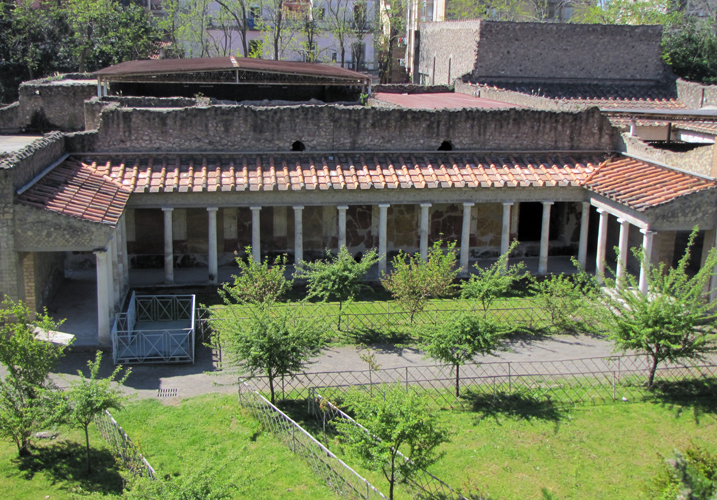
Italy Photos 3: Naples Area: Oplontis, Vesuvius, Herculaneum, Pozzuoli, and The Naples Museum

Oplontis: the luxurious villa of Poppaea, the wife of Emperor Nero. Like Pompeii it was buried by Vesuvius in AD79.
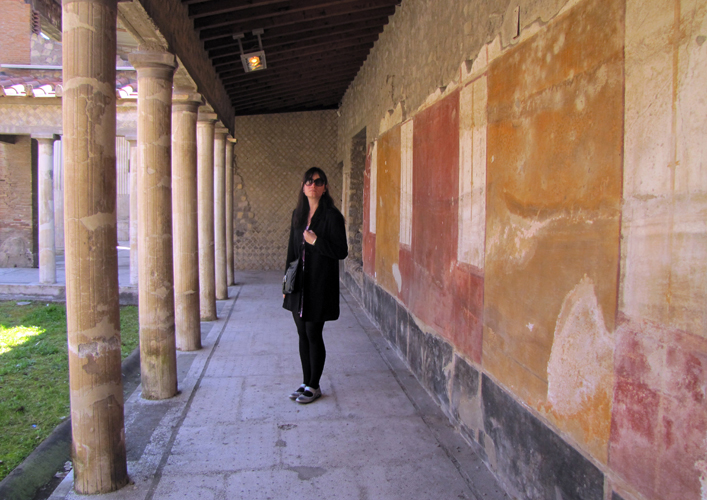
Portico at Oplontis
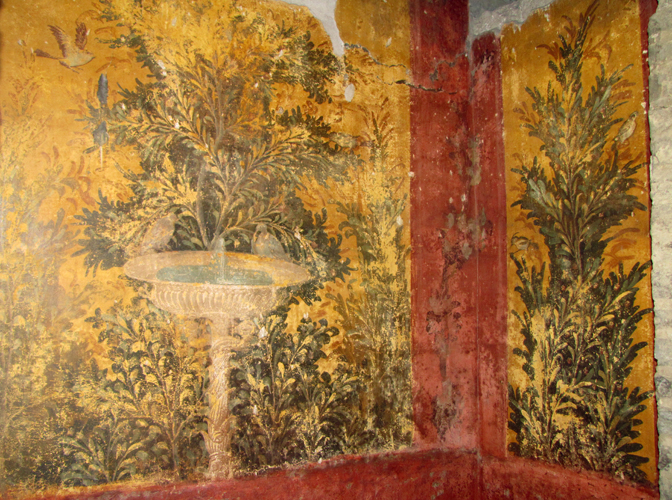
Wall paintings in Oplontis. The Romans loved gardens, both real and imaginary.



Peristyle (garden surrounded by a colonnade).

The ceilings as well as the walls were painted.
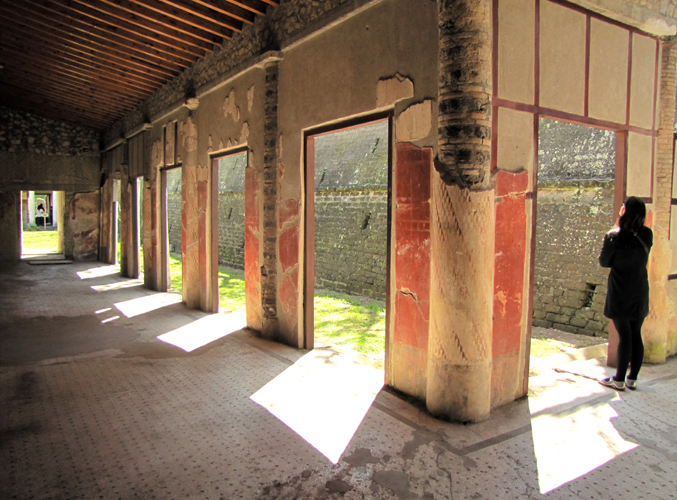

Nearly every room had a mosaic on the floor, with a wide variety of styles.

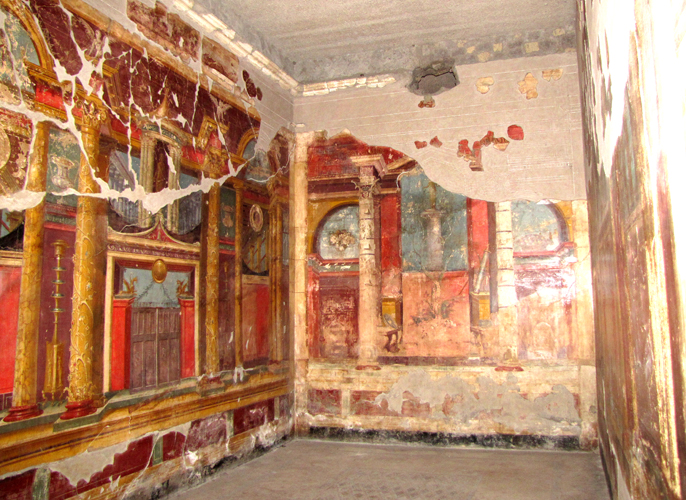

Crater of Mount Vesuvius. It last erupted in 1944.

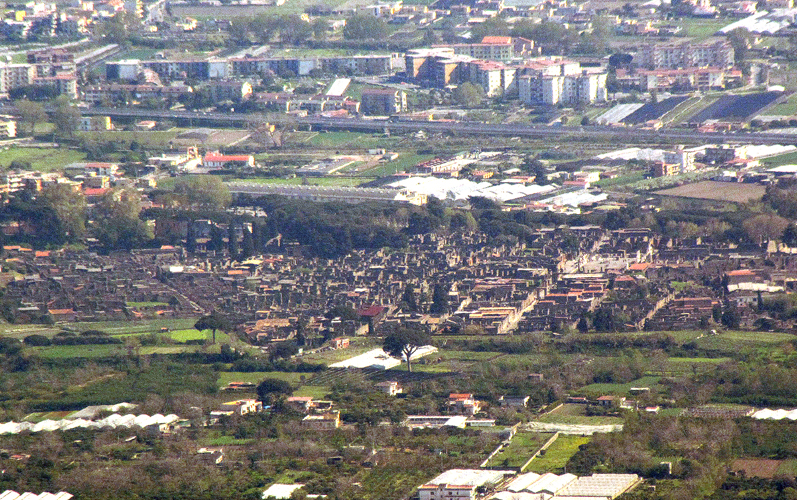
View of Pompeii from the top of Vesuvius.
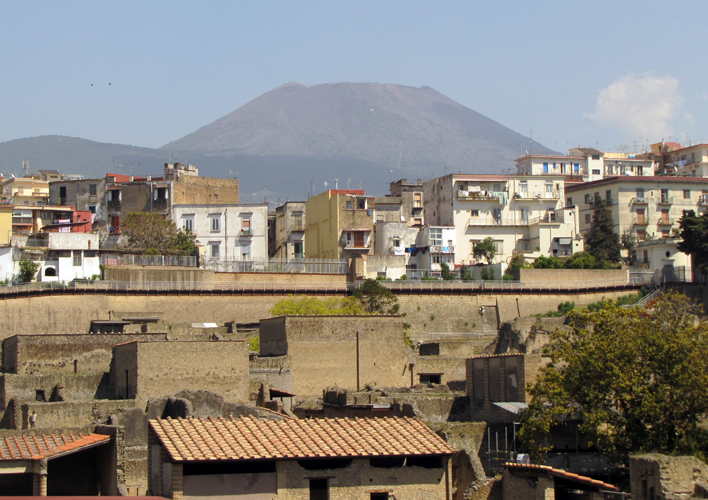
Herculaneum, with Vesuvius in the background.
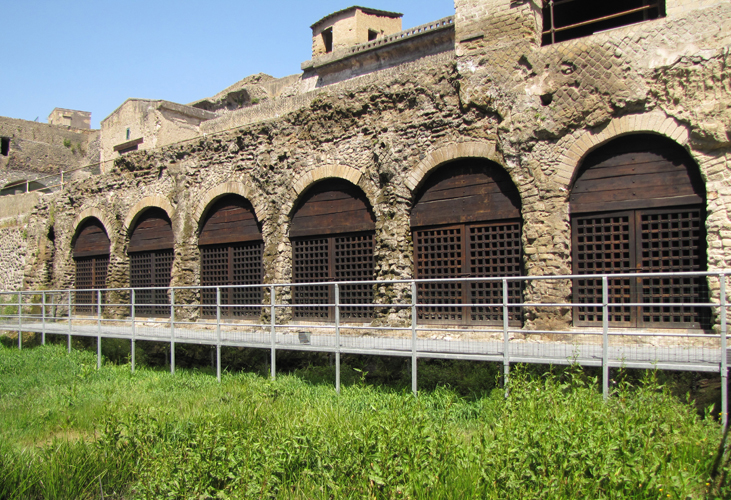
Herculaneum was buried in a mud slide caused by the eruption of Vesuvius in AD79. It was preserved in better condition than Pompeii
and an amazing range of buildings and artefacts have been found there.
The sea at that time came up to the arches you see here. Many skeletons were found under the arches,
of women and children, while the men were out on the beach trying to find a way to escape.
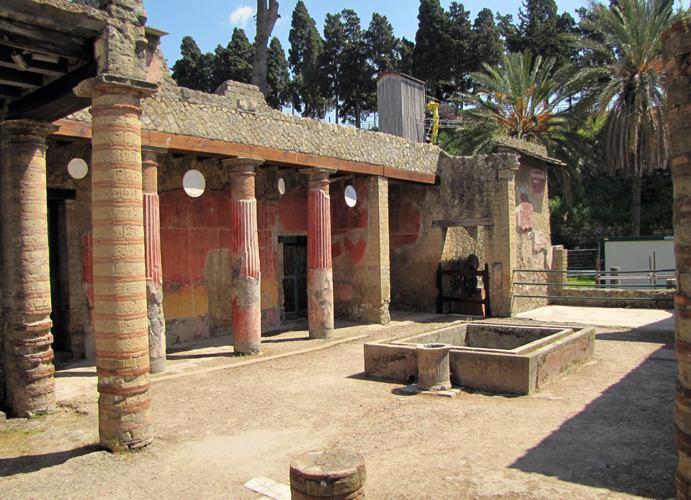
The house of a rich inhabitant of Herculaneum.

A shop with the racks for amphorae (the big jars) still intact.
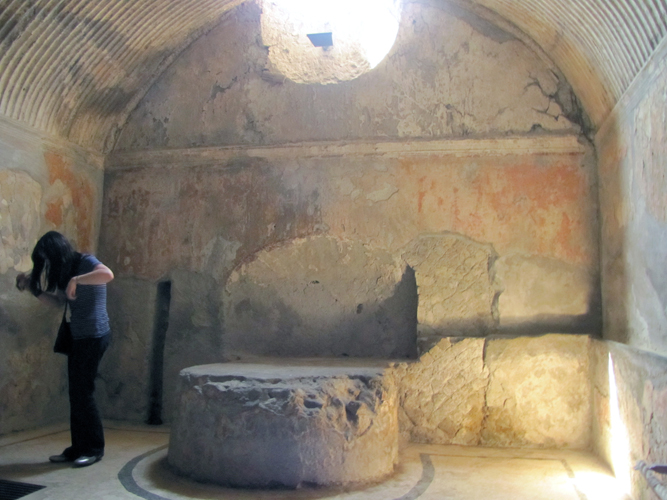
One of the many bath houses at Herculaneum

Changing room at the baths, with geometric mosaic.

Octopus mosaic in a bath house.
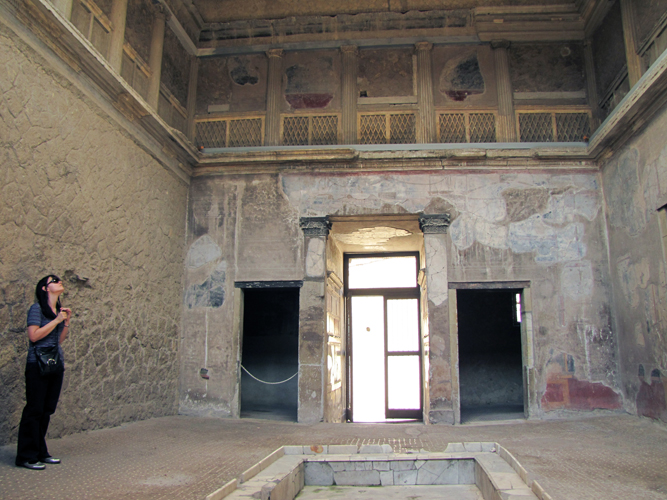
Atrium of a large house. The atrium usually had an opening in the roof to let
rainwater into a pool underneath (the impluvium).

The opening above the pool (compluvium).

Another atrium. The wooden doors at the back, amazingly, survived the eruption.
They allowed the owner to close off the room at the back for a little privacy.
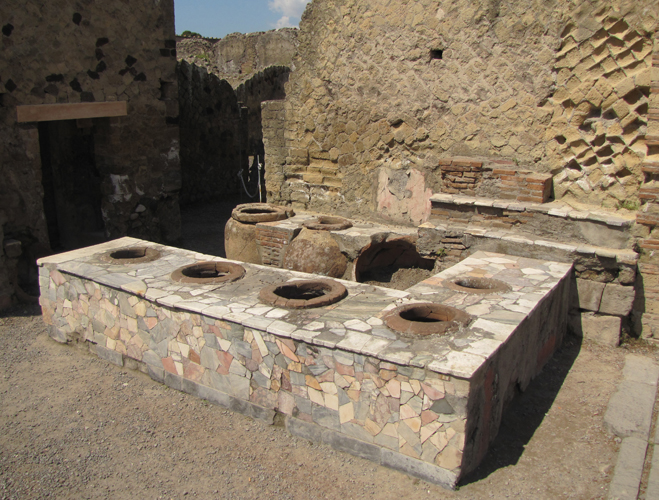
A thermopolium - a sort of fast food shop. Food and drink was served from jars sunk into the counter.
Some of these shops had seating, so were both a take-away and a restaurant.
Most Romans did not eat lunch at home - they went out to a place like this.

Street in Herculaneum.
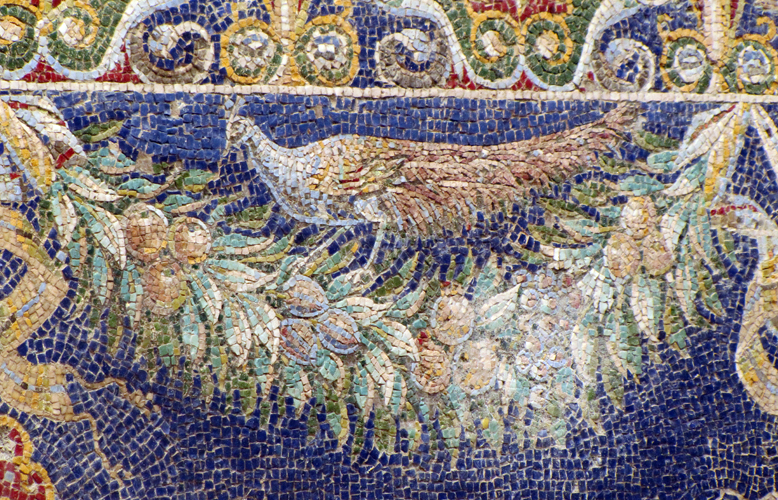
Mosaic on the wall of a house.

Mosaic showing the sea god and his wife.
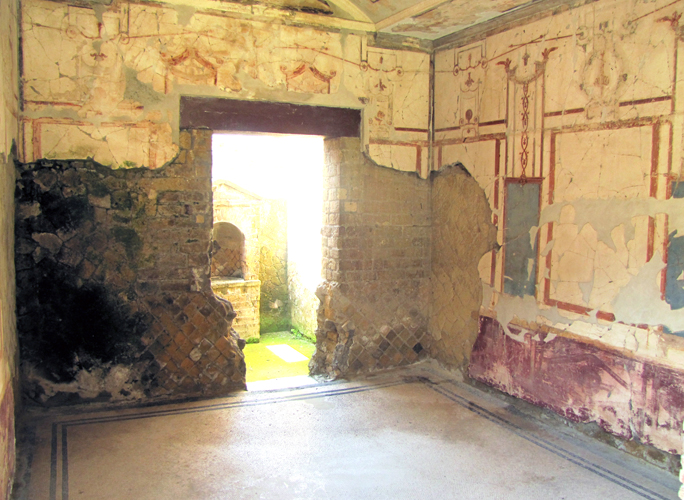
Room in a house with painted walls and mosaic floor.
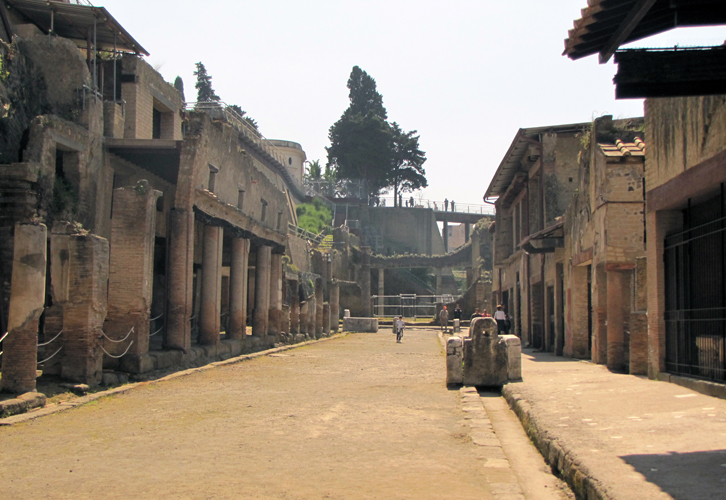
One of the main streets in Herculaneum. A gutter for rain can be seen as well as a fountain.

Mosaic of a sea monster in one of the bath houses.
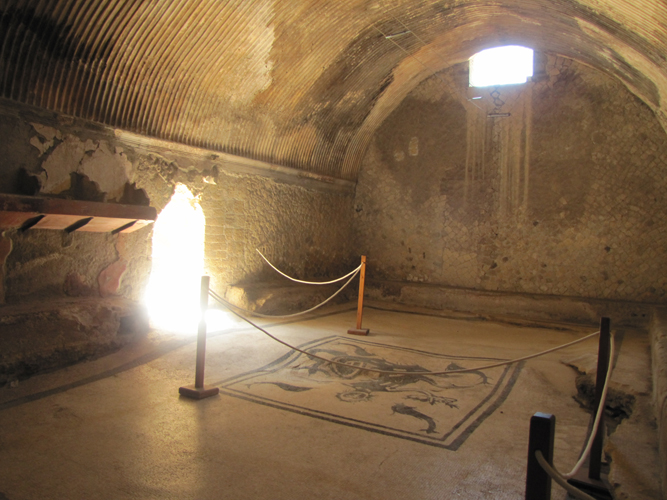
A bath house. Clothes were stored on the shelves.
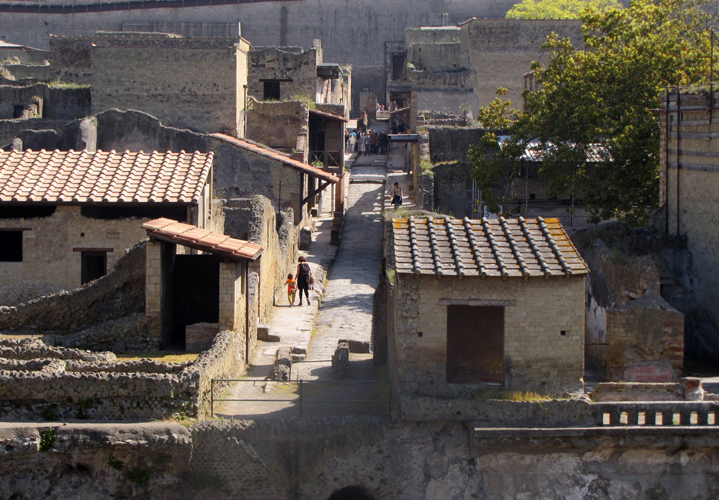
Herculaneum


The Solfatara Crater in Pozzuoli, near Naples.
This is an old volcano crater which still gives off hot steam and sulphur.
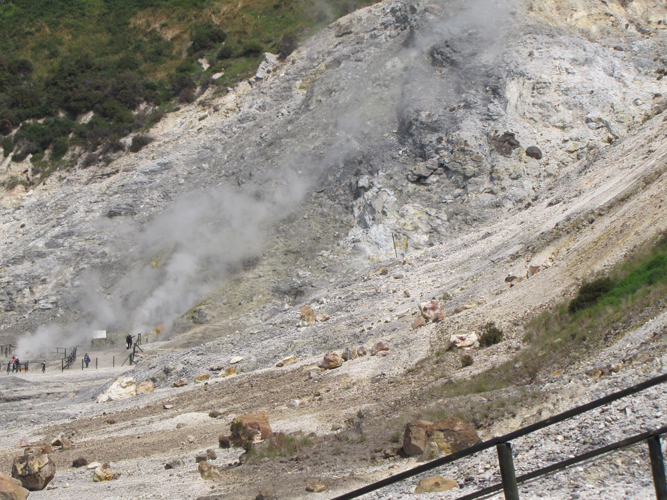

A fumarole - steam being shot out from the earth at around 160 degrees Celsius.
The yellow colour is sulphur.

A bubbling mud pool in the middle of the crater. The water is 140 degrees.
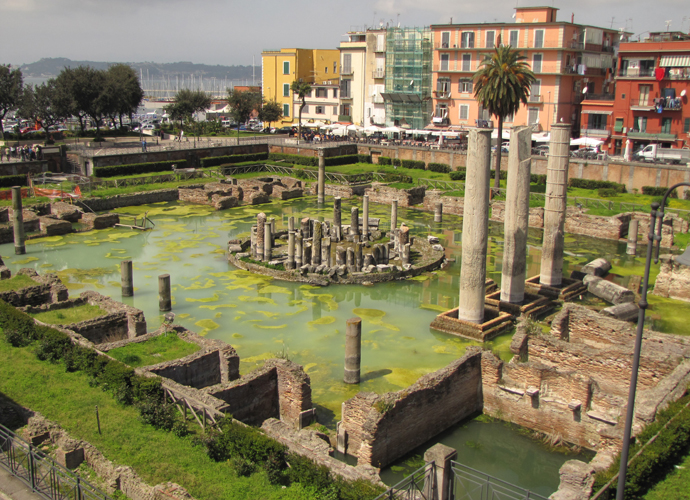
The market place in Pozzuoli (ancient Puteoli). Now flooded.
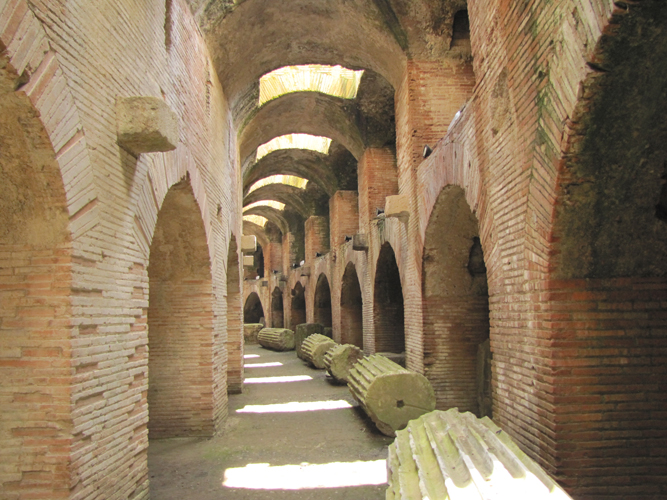
The rooms underneath the amphitheatre in Pozzuoli.
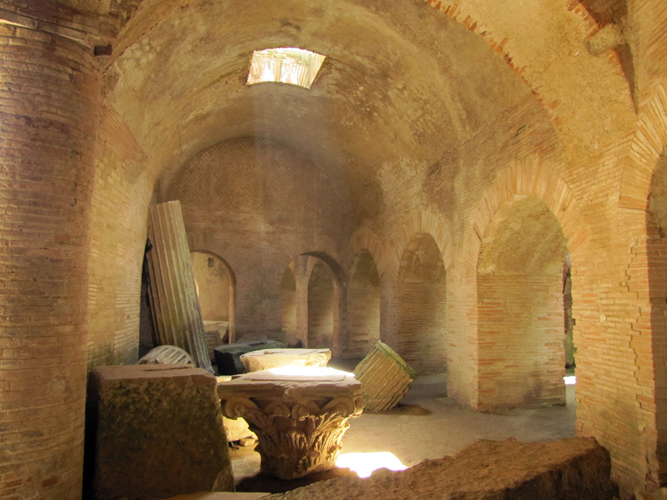
As in the Colosseum, wild animals were kept in cages under the arena and could be raised into it with lifts.
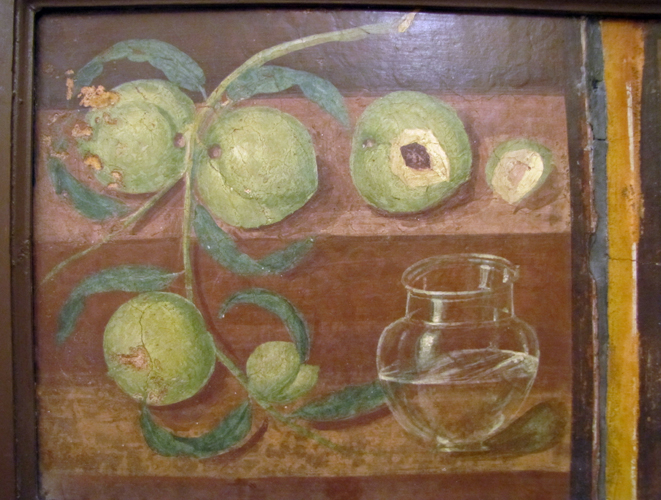
Ancient Roman still life painting in the Naples Museum

Mural from the temple of Isis at Pompeii
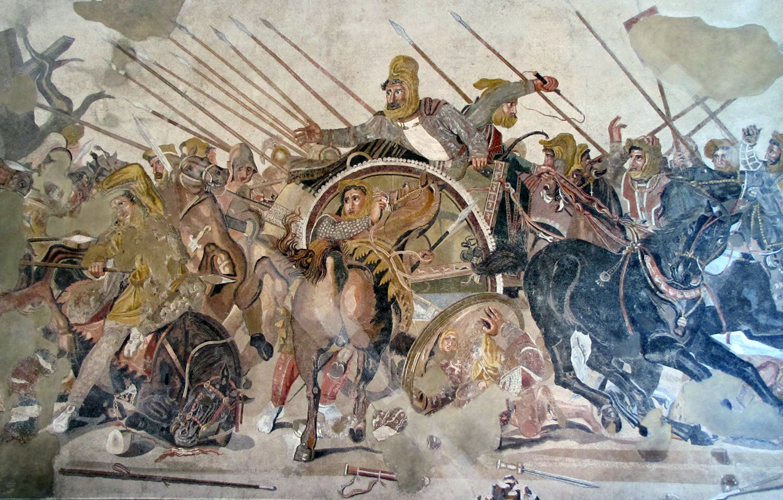
Perhaps the most famous mosaic in the world - the Alexander mosaic from Pompeii, now in the Naples Museum.
It shows Alexander the Great in battle against Darius, King of Persia (the figure with his arm outstretched).
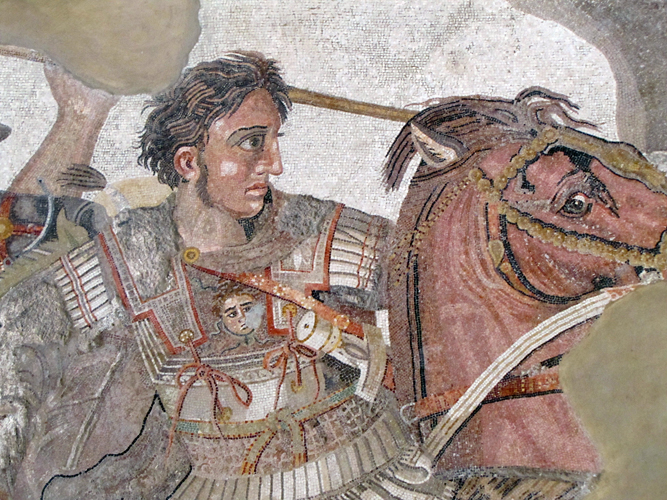
Alexander, from the above mosaic.
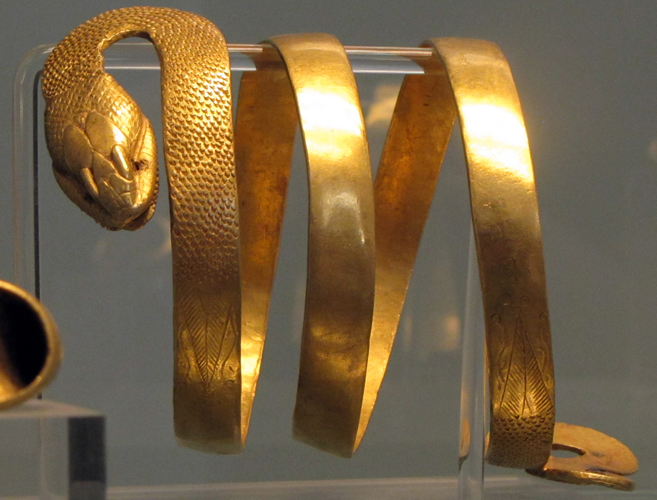
A gold snake armband in the Naples Museum
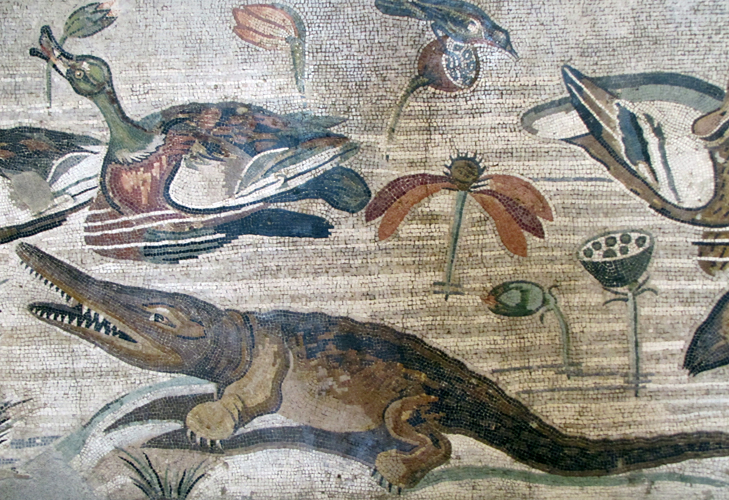
The Nile Mosaic from Pompeii

A little frog from the Nile Mosaic

Mosaic in the Naples Museum

Bust of Julius Caesar in the Naples Museum
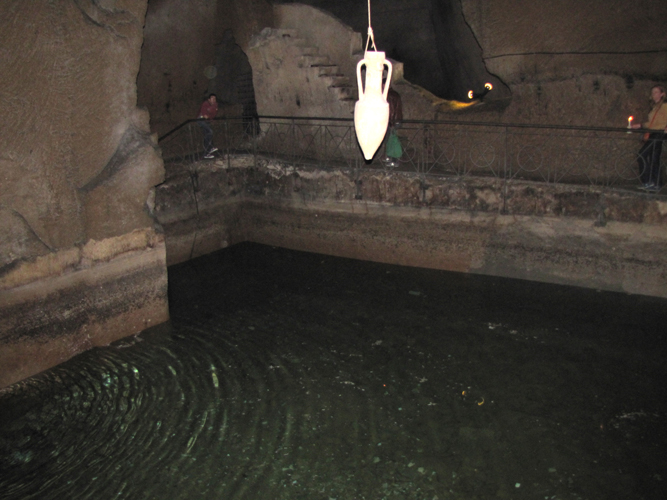
Water reservoir built by the ancient Romans underneath Neapolis, modern Naples.
The rooms and tunnels were dug by the Greeks as a quarry, and the Romans converted it into a water supply.